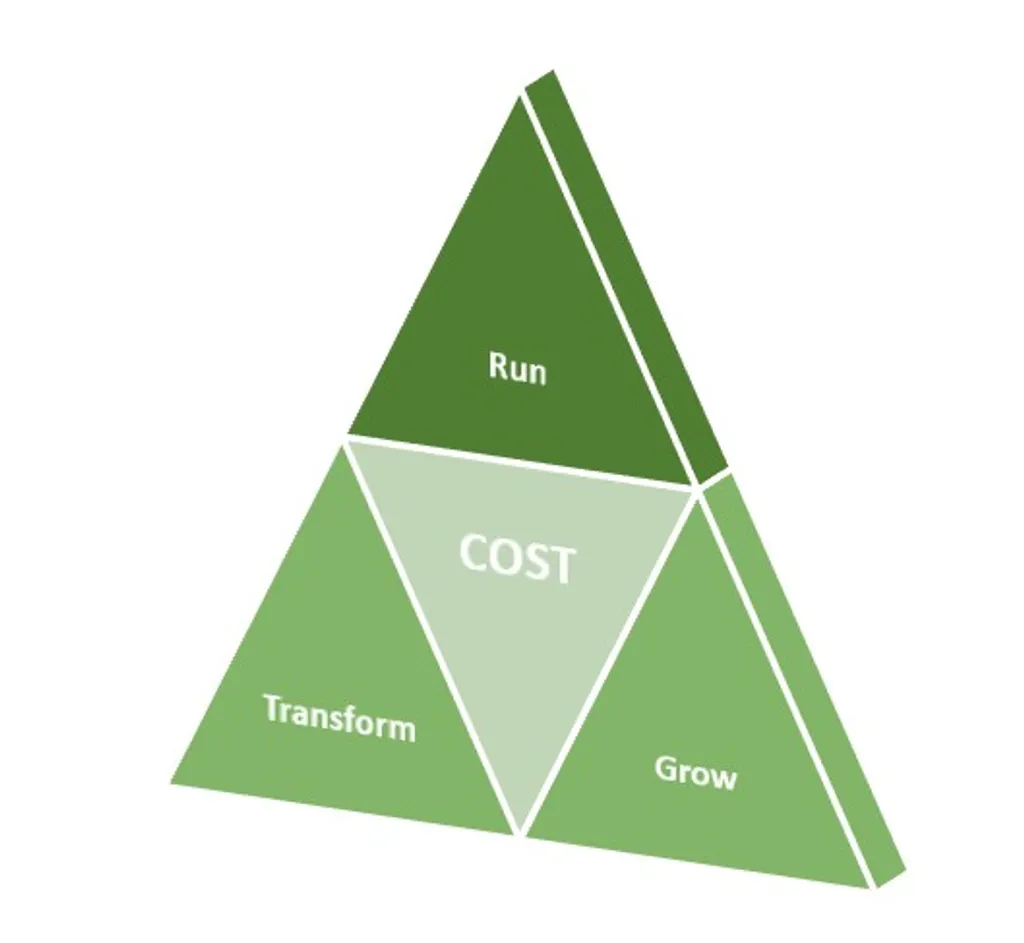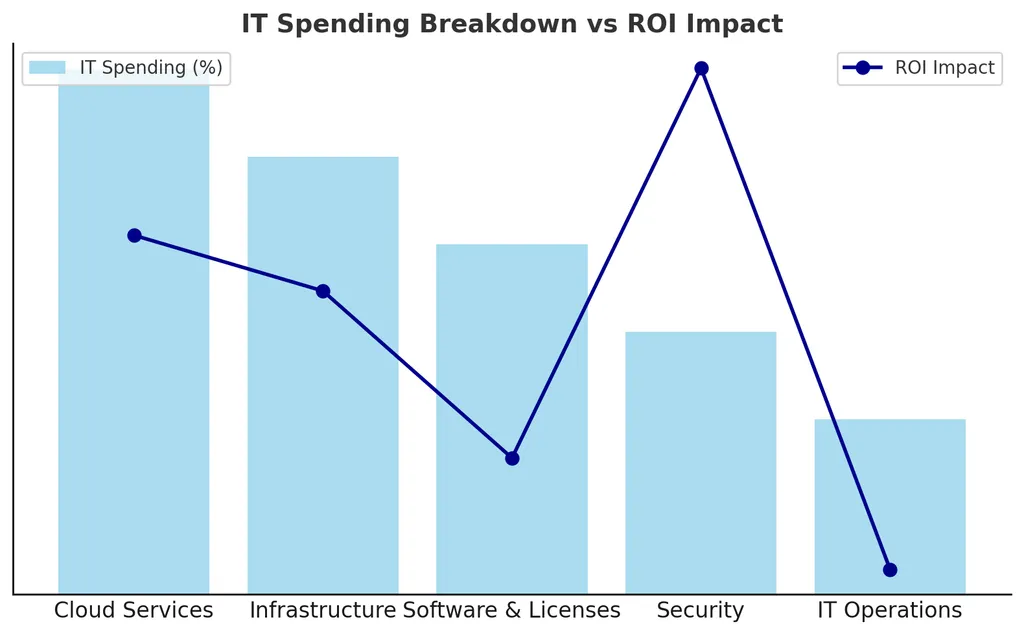 Cutting IT Costs Without Cutting Value
Cutting IT Costs Without Cutting Value
IT budgets are constantly under pressure, yet organizations cannot afford to compromise on performance and innovation. Cost-cutting in IT should focus on optimization, efficiency, and strategic investments rather than just reducing expenditures. This blog explores practical strategies to cut IT costs while maintaining high value, ensuring that businesses stay competitive without sacrificing critical services.
## Introduction
Cost management is a top priority for IT leaders, but reducing expenses without losing value is a challenge. Many businesses struggle with rising infrastructure costs, vendor contracts, and inefficient operations. The key to sustainable cost reduction lies in strategic decision-making and technology optimization.
## Benefits
- Efficiency Gains: Streamlining infrastructure and automating workflows reduces operational overhead.
- Better Vendor Management: Renegotiating contracts and leveraging bulk purchasing improves cost efficiency.
- Cloud and Hybrid Solutions: Moving workloads to the right environment saves costs without performance loss.
- Optimized Resource Utilization: Eliminating underused software and hardware prevents unnecessary spending.
## Challenges
- Resistance to Change: Stakeholders may hesitate to adopt new cost-saving measures.
- Hidden Costs in Cloud & Licensing: Mismanaged cloud expenses and complex licensing structures can offset savings.
- Balancing Innovation with Savings: Reducing costs shouldn’t limit technological advancements.
## Conclusion
Cutting IT costs without cutting value requires a strategic approach, combining efficiency, smart vendor management, and technology optimization. Stay tuned for deeper insights into cost-saving techniques in upcoming posts!
 Beyond Budgets – How IT Cost Control Drives Strategic Decision-Making
Beyond Budgets – How IT Cost Control Drives Strategic Decision-Making
IT cost control is often viewed as a budgeting exercise—but in reality, it’s a strategic lever for business transformation. When approached correctly, cost control becomes a tool for prioritizing investments, improving operational efficiency, and fueling innovation. In this post, we explore how IT leaders can use cost control to align IT spending with broader business goals.
## Introduction
Many IT departments face the challenge of "doing more with less." The pressure to reduce spending while delivering greater value is constant. However, cost control isn't about slashing budgets—it's about spending smarter. When managed strategically, IT cost control unlocks new opportunities, enhances visibility, and enables better decision-making at every level.
## 1. Visibility is the Foundation of Control
You can’t control what you can’t see. The first step to IT cost control is gaining end-to-end visibility into where money is going.
- Use ITFM (IT Financial Management) tools to track costs by service, application, or department.
- Tag and categorize cloud and infrastructure spending.
- Build dashboards that show real-time budget vs. actual spend.
## 2. Classify Spending Into Value Buckets
Not all IT costs are equal. Categorize spending to identify:
- Run costs (keeping the lights on)
- Grow costs (scaling services and improving user experience)
- Transform costs (investing in innovation and new capabilities)
This framework helps leaders align spending with business outcomes and redirect funds from low-value to high-value initiatives.
## 3. Control Cloud & SaaS Sprawl
Cloud is one of the largest—and most variable—IT cost drivers.
- Right-size instances, remove unused resources.
- Review SaaS subscriptions—many are unused or duplicated.
- Implement FinOps practices to bring financial accountability to cloud teams.
## 4. Vendor Strategy as a Cost Lever
Vendors can be strategic partners—or a drain on budgets.
- Consolidate vendors where possible.
- Renegotiate contracts with performance-based incentives.
- Regularly benchmark pricing and SLAs against competitors.
## 5. Cost Control Enables Innovation
Strategic cost control frees up budget to invest in new technologies:
- AI, automation, and analytics to improve decision-making.
- Edge computing and IoT in data-driven environments.
- Cybersecurity and compliance investments to reduce long-term risk.
## Conclusion
Cost control is more than just cost-cutting—it’s an essential discipline for aligning IT with the business. When cost transparency, value alignment, and strategic decision-making come together, IT leaders can drive transformation and innovation while maintaining financial discipline.
Smart IT cost control turns financial pressure into a competitive advantage
 Maximizing IT ROI – Smart Cost-Saving Strategies Beyond Budget Cuts
Maximizing IT ROI – Smart Cost-Saving Strategies Beyond Budget Cuts
Cost-cutting alone doesn’t equate to long-term IT savings. Instead, businesses must focus on maximizing ROI by optimizing operations, vendor contracts, cloud workloads, and asset lifecycles. A data-driven approach to IT spending ensures efficiency without compromising service quality or innovation.
## Introduction
As IT budgets face increasing scrutiny, CIOs and IT leaders must rethink cost-saving strategies beyond traditional budget cuts. The challenge isn’t just to spend less but to spend smarter—ensuring every dollar invested in IT delivers maximum business value. This blog explores practical strategies to optimize IT investments without sacrificing performance.
## 1. Optimizing IT Operations Without Downgrading Services
Many organizations cut IT budgets reactively, leading to reduced service quality, security risks, and operational inefficiencies. Instead, businesses should:
- Automate routine tasks to reduce manual workload (AIOps, RPA).
- Consolidate IT tools & platforms to avoid redundancy.
- Invest in proactive monitoring to prevent costly outages and downtime.
## 2. Cloud Cost Management Through Smarter Workload Distribution
Cloud costs are among the biggest IT expenditures. Instead of simply reducing cloud services, organizations should optimize workload placement and resource allocation:
- Leverage cloud cost analysis tools (FinOps) to identify wastage.
- Use reserved instances and auto-scaling to match real-time demand.
- Reassess multi-cloud vs. hybrid-cloud strategies based on cost efficiency.
## 3. Strategic Vendor Negotiations & Contract Optimization
Vendor contracts often include hidden costs and long-term lock-ins. IT leaders can negotiate better deals by:
- Benchmarking vendor pricing against industry standards.
- Seeking performance-based contracts (pay-for-value models).
- Consolidating vendor agreements for better pricing power.
## 4. Enhancing IT Asset Utilization & Lifecycle Management
IT hardware and software often get replaced prematurely, leading to unnecessary expenses. A structured asset lifecycle strategy can reduce costs:
- Extend hardware life with predictive maintenance.
- Leverage refurbished enterprise-grade equipment where feasible.
- Implement IT asset tracking to avoid underutilized resources.
## 5. Data-Driven Decision-Making for IT Budget Efficiency
Cost-saving decisions should be based on data, not assumptions. Organizations should:
- Use analytics to track IT spending trends & ROI.
- Identify underperforming investments and reallocate funds.
- Develop a cost-optimization framework tied to business goals.
## Conclusion
The future of IT cost optimization is about balancing efficiency with innovation. By focusing on smart investments, strategic vendor management, and data-driven insights, IT leaders can ensure their budgets are optimized without compromising growth, security, or service quality.
 Cutting IT Costs Without Cutting Value
Cutting IT Costs Without Cutting Value 

